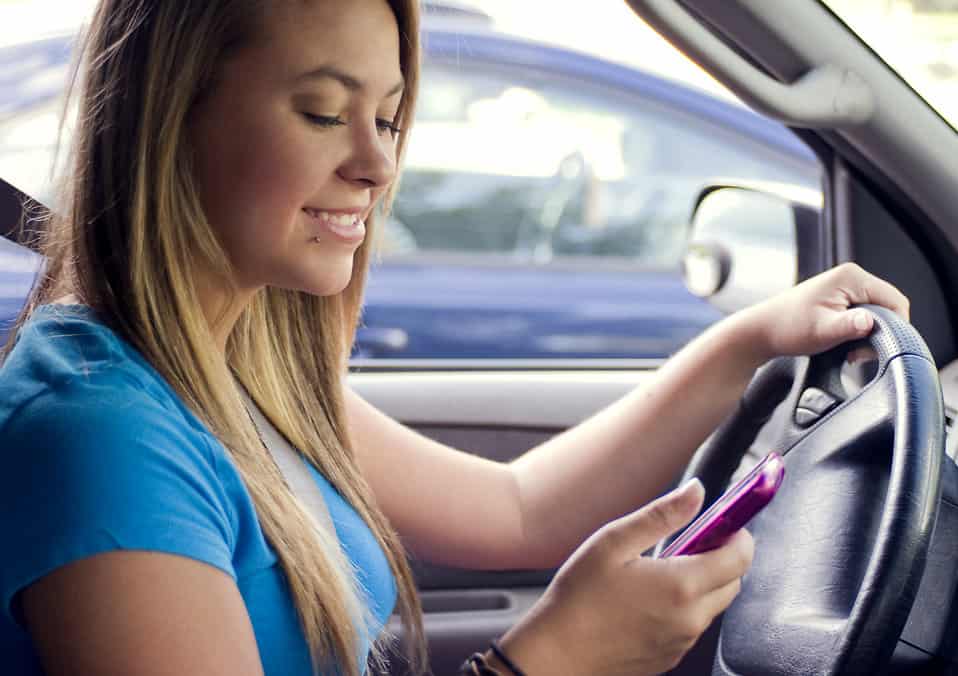Texting While Driving Injuries
Any Distraction can Endanger a Driver’s Safety. However, Texting is the Most Alarming Because It Involves All Three Types of Distraction –Visual, Manual, and Cognitive.
5 Unknown Facts About Texting and Driving
Motor vehicle crashes remain the leading cause of death for American teenagers.
According to a survey conducted by the American Automobile Association and Seventeen magazine, almost nine in 10 teenage drivers (86%) have driven while distracted, even though 84% say they know they shouldn’t.
Because texting involves both physically taking the phone out, mentally thinking about, and reading the text, it is especially dangerous for young teens who are inexperienced and more risk-taking behind the wheel.
Source: National Highway Traffic Safety Administration (NHTSA)
The No. 1 source of driver inattention is the use of a wireless device.
Distracted driving is a growing problem on America’s roads, and the number of injuries and deaths will keep climbing every year unless drivers start educating themselves about safety regulations.
Text messaging has grown an almost 10,000-fold increase in 10 years and many drivers still continue to text even though they are aware of the dangers (Virginia Tech/NHTSA). Most of us have texted while driving; and though you may not have gotten into an accident, you probably drifted into another lane or had to make a sudden stop because you were distracted by the text message. Yet, we still make no efforts to stop.
Drivers who use handheld devices are four times as likely to get into crashes serious enough to injure themselves.
(Insurance Institute for Highway Safety)
In addition, drivers who are texting can be more than 20 times more likely to crash than non-distracted drivers. The National Safety Council estimates 25 percent of all crashes in 2008 involved talking on cell phones – accounting for 1.4 million crashes and 645,000 injuries that year.
As a response to these astounding numbers, California law passed the Wireless Communication Device Law (effective January 1, 2009) banning drivers from writing, sending, or reading text messages on a wireless telephone while driving, (California Vehicle Code 23123).
Driving while using a cell phone reduces the amount of brain activity associated with driving by 37%.
(Carnegie Mellon University)
Because texting involves both physically taking the phone out, mentally thinking about, and reading the text, it is especially dangerous for young teens who are inexperienced and more risk-taking behind the wheel.
Texting while driving involves three types of distraction: visual, manual, and cognitive. The process of reaching for a phone and reading a text message requires you to take your eyes off the road, taking hands off the wheel, and take your mind off what you are doing.
Using a cell phone while driving, whether it’s handheld or hands-free, delays a driver’s reactions as much as having a blood alcohol concentration at the legal limit of 0.08%.
Car and Driver Magazine was the first to put this to the text. Rigging a car with a red light to alert drivers when to brake, the magazine tested how long it takes to hit the brake when sober, when legally drunk at .08, when reading and e-mail, and when sending a text.
The results were frightening. The driver was slower reaching and braking while e-mailing and texting than he was while under the influence of alcohol. This proves that in some ways, texting while driving is more dangerous than drunk driving.
Source: University of Utah
Contact a California TWD Attorney
If you or a loved one are the victims of a car accident caused by a driver’s inattention, and especially while on the phone or driving, you deserve to be compensated for your sufferings, and you may need a lawyer to help you win your case. We have the experience and quality in serving San Diego County personal injury victims. Contact our personal injury office to set up a free consultation.…

